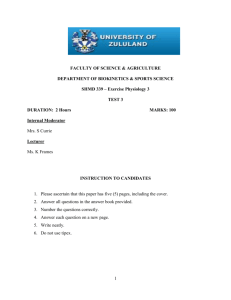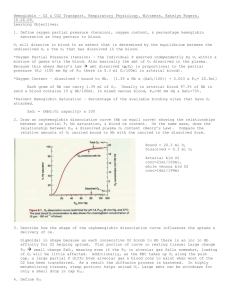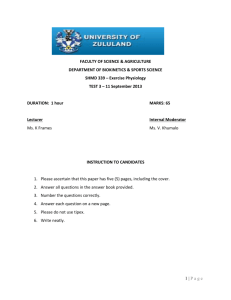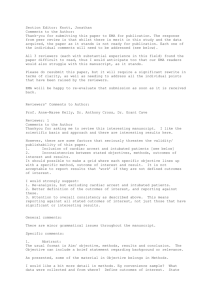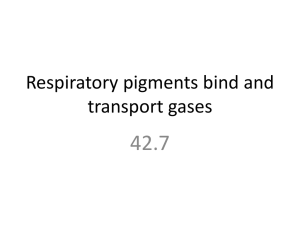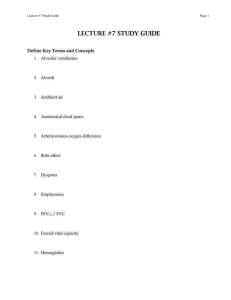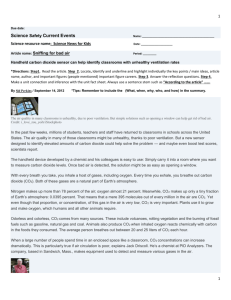Pulmonary/Respiration
advertisement
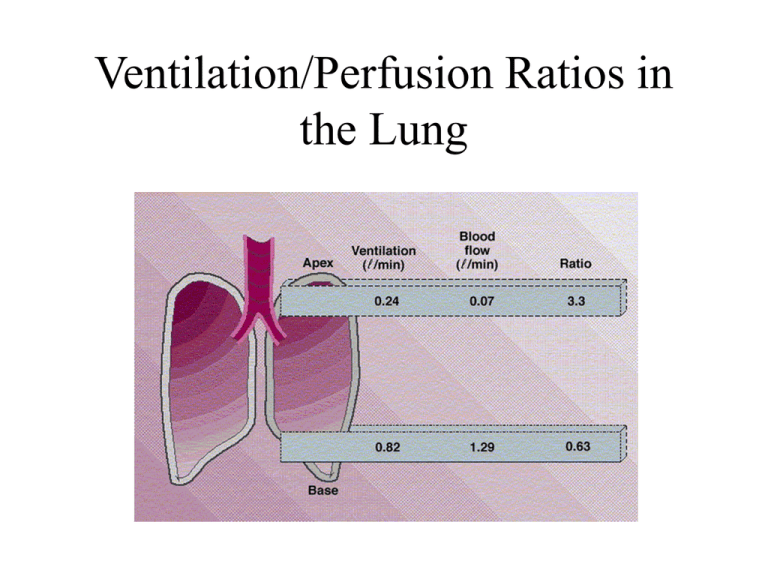
Ventilation/Perfusion Ratios in the Lung O2 Transport in the Blood • O2 is bound to hemoglobin (Hb) for transport in the blood – Oxyhemoglobin: O2 bound to Hb – Deoxyhemoglobin: O2 not bound to Hb Oxyhemoglobin Dissociation Curve O2-Hb Dissociation Curve: Effect of pH • Blood pH declines during heavy exercise • Results in a “rightward” shift of the curve – Bohr effect – Favors “offloading” of O2 to the tissues pH and O2-Hem Diss. Curve O2-Hb Dissociation Curve: Effect of Temperature • Increased blood temperature results in a weaker Hb-O2 bond • Rightward shift of curve – Easier “offloading” of O2 at tissues Temp. and O2-Hem Diss. Curve O2 Transport in Muscle • Myoglobin (Mb) shuttles O2 from the cell membrane to the mitochondria • Higher affinity for O2 than hemoglobin – Even at low PO2 – Allows Mb to store O2 Diss. Curve - Myoglobin vs. Hemoglobin CO2 Transport in Blood • Dissolved in plasma (10%) • Bound to Hb (20%) • Bicarbonate (70%) – CO2 + H2O H2CO3 H+ + HCO3– Also important for buffering H+ 3 Forms of CO2 Transport in Blood CO2 Exchange in Lung Ventilation and Acid-Base Balance • Blood pH is regulated in part by ventilation • An increase in ventilation causes exhalation of additional CO2 – Reduces blood PCO2 – Lowers H+ concentration Transition from Rest to Steady State Exercise in a Hot Environment • During prolonged submaximal exercise: – Ventilation tends to drift upward – Little change in PCO2 – Higher ventilation not due to increased PCO2 Ventilation vs. Hot/Humid Respiratory Parameters (Elite vs. Untrained)
